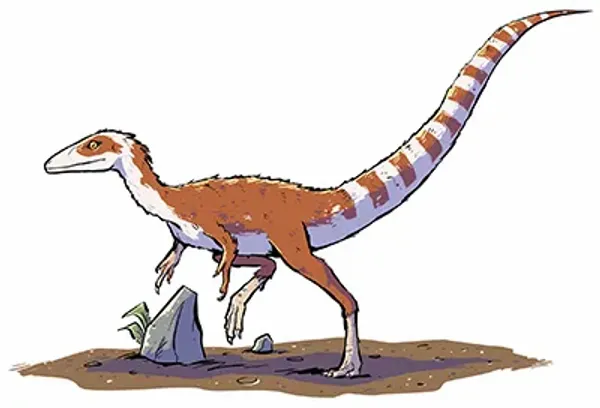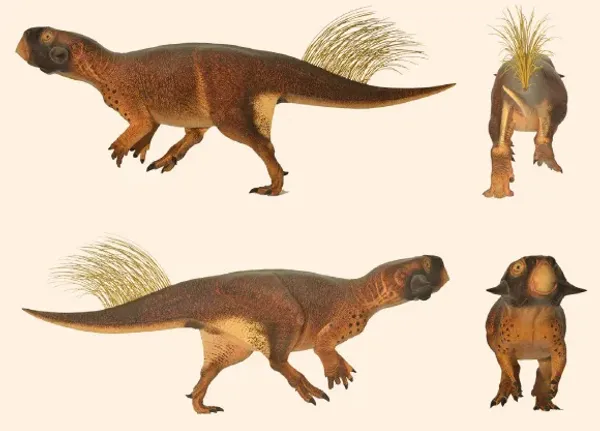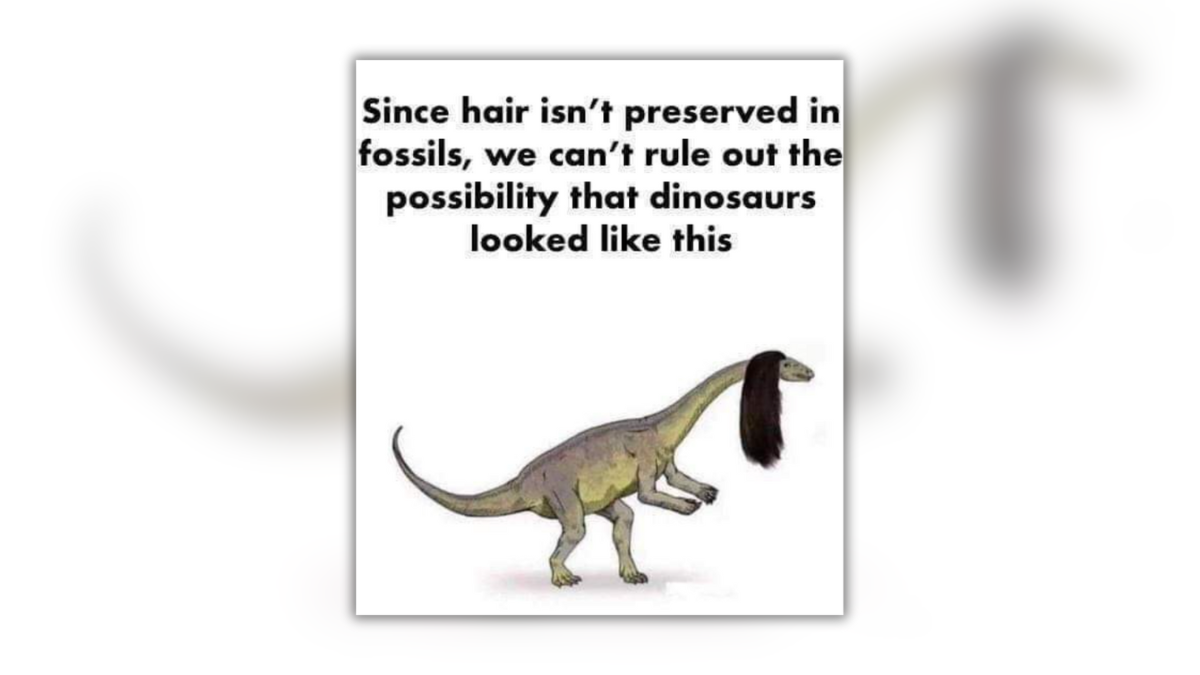The likeness of a two-footed dinosaur with flowing, raven-colored hair has appeared in many internet corners, from Pinterest to Imgur to Reddit. The argument underlying these posts is that since "hair isn't preserved in fossils," supposedly, scientists cannot "rule out the possibility" that dinosaurs once had hair. For example, the post below on X, formerly Twitter, shared on March 10, 2024. At the time of this publication, it had received more than 1 million views.
— Spill The Memes (@SpillTheMemes) March 10, 2024
The notion of a dinosaur with Cher-like hair is entertaining. It's also outlandish, according to experts.
Paleontologist Jingmai O'Connor, associate curator of fossil reptiles at Chicago's Field Museum of Natural History, told Snopes that it's false that dinosaurs had hair.
Hair does fossilize. Take, for example, this extremely intact woolly mammoth, which was fossilized with skin and hair some 30,000 years ago.
That being said, O'Connor notes that protofeathers – very early, primitive feathers – "look very much like hair and fur."
"They are monofilamentous but developmentally (in the follicle) very, very different. so many dinosaurs (and pterosaurs) had feathers that look hair-like, but none have been found with the hair-like feathers only on their head," O'Connor told Snopes.
O'Connor explained that feathers are thought to have evolved from scales and are dead outgrowths, which are very different from fur.
Researchers wrote in 2016 that mammals, birds, and reptiles "inherited key cell structures that give rise to their fur, feathers, and scales" from a shared reptilian ancestor over time. This group of cells is called the anatomical placode, which appears only briefly during the development of snakes and lizards. These cells express the same developmental genes as birds and mammals in the embryonic period, which suggests that hair, feathers, and scales may have originated at the same time in evolutionary history.
Mammals as we know them today are a branch of Synapsida, which originated with a late reptilian lineage of "mammal-like reptiles." According to the Field Museum, the first true mammals appeared in the fossil record around 200 million years ago, and with them, fur.
But early feathered dinosaur fossils lend clues to how fur may have inevitably descended from primitive feathers.
Sinosauropteryx, the first known feathered dinosaur, exhibited mammalian-like hair. Its name means "Chinese lizard wing," These small theropods had a covering of thin, hair-like primitive feathers that resembled hair. The Australian Museum says its name references "the fact that this Chinese fossil was the first non-avian (or 'non-bird') dinosaur found with feathers." Its 1996 discovery is thought to have been one of the most important fossil finds of the century because it was the first non-avian dinosaur found with feather-like structures.
 Sinosauropteryx had small, delicate feathers that resembled hair. (American Natural History Museum)
Sinosauropteryx had small, delicate feathers that resembled hair. (American Natural History Museum)
Psittacosaurus, a fossil known for its "remarkable for the exquisite preservation of squamous (scaly) skin and other soft tissues that cover almost its entire body," is another example of a dinosaur with fur-like bristles on its tail.
 Bristles are shown on the tail of Psittacosaurus. (University of Bristol)
Bristles are shown on the tail of Psittacosaurus. (University of Bristol)

